The second international break of the new season started this week with national teams facing each other all across the globe. On Thursday, the five-time World Cup winner Brazil took on the most recent Africa Cup of Nations finalist Senegal in an international friendly in Singapore.
Even though it was just a friendly, both teams fielded practically the strongest XIs for this match. The biggest spotlight was on Neymar who played his 100th game for the Seleção. The Paris Saint-Germain striker did not score but it was the Brazilian Premier League stars who combined for the opener. Manchester City’s Gabriel Jesus found Liverpool’s Roberto Firmino with a lovely through ball after cutting inside from the right side. The Liverpool man dinked the Senegalese goalkeeper and put Brazil in front.
On the opposite side, it was another Premier League star who carried his team forward. Liverpool’s Sadio Mané took the ball on the left-wing close to the halfway line and wriggled his way through bypassing three Brazilian players. The Champions League winner earned a penalty that was coolly converted by his teammate Famara Diédhiou.
In general, it was a pretty equal game. Both teams had a similar number of shots (Brazil 11; Senegal 10) and a similar amount of ball possession (Brazil 53%; Senegal 47%). However, the tempo of the game was not the highest due to humidity and hot temperature that saw the game being stopped for a cooling break twice.
This tactical analysis will take a closer look at both teams’ game strategies and explain the key moments that lead to a one-all draw.
Lineups
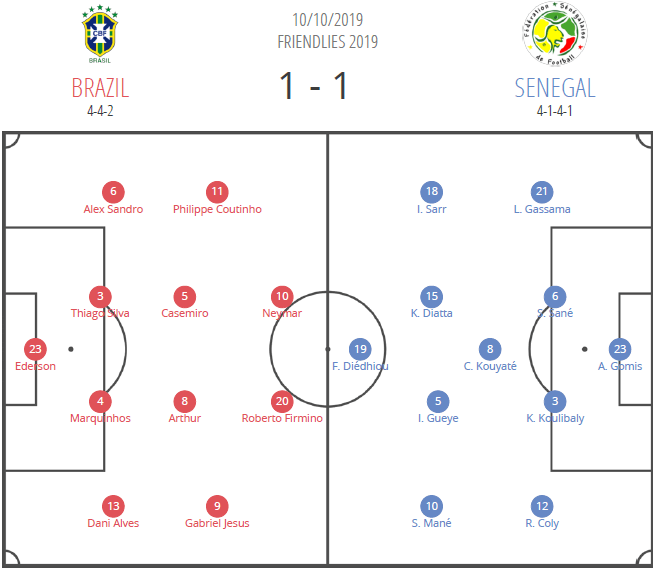
As mentioned in the opening paragraph, both teams took this friendly match seriously and fielded their strongest starting XIs. The Brazilian head coach Tite opted for a 4-2-3-1 formation in this game. It was Ederson who started in goal replacing injured Alisson and was protected by a back four consisting of Dani Alves, Marquinhos, Thiago Silva and Alex Sandro. Further up it was a midfield duo of Barcelona’s Arthur and Real Madrid’s Casemiro with Phillipe Coutinho in front of them taking up a playmaker’s role. Lastly, it was the attacking trio of Neymar on the left, Jesus on the right and Firmino down the centre who were going to threaten the Senegalese goal.
Tite’s opponent Aliou Cissé also went for a 4-2-3-1 shape. Alfred Gomis started between the sticks with Lamine Gassama at right-back, Racine Coly at left-back and the centre-back duo of Napoli’s Kalidou Koulibaly and Schalke’s Salif Sané. Then, it was Cheikhou Kouyaté and Idrissa Gueye who formed the midfield partnership with Krépin Diatta slightly ahead of them. Senegal’s main man Mané was deployed on the left-wing with Ismaila Sarr taking up the position on the opposite flank. Diédhiou started down the middle and was a lone striker for the ‘Lions of Teranga’.
Brazil in possession
The five-time World Cup winners shaped up in a 4-2-3-1 formation as mentioned previously. The aforementioned system can be also easily altered to 4-3-3 depending on players’ characteristics and flexibility. Regardless of the numbers, it is more important to define the positions that the Brazilians took up in the build-up phase.
If one of the centre-backs had the ball, the Seleção played out having all four players in their backline as can be seen in the first image below. Both Alex Sandro and Dani Alves stayed deeper in their own half. Further up, Casemiro was the deepest of all three midfielders usually dropping to support the ball progression. Arthur stayed slightly higher up creating a diagonal line with the Real Madrid holding midfielder. The furthest of the three was Coutinho who was mostly positioned closer to the left half-space.
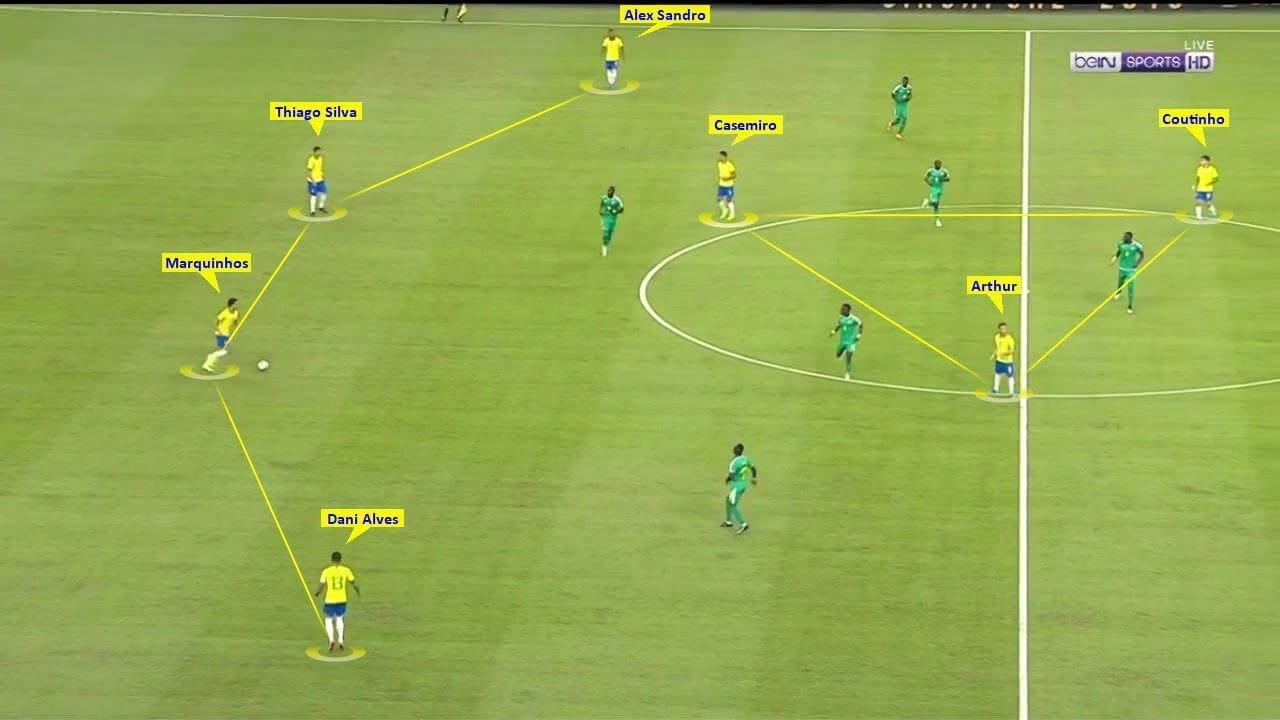
Regarding the three attacking players, Neymar was situated on the left with Jesus pushed to the right-wing and Firmino very frequently abandoning his striker’s position and dropping deeper to link-up with the midfield. It is important to note Brazil’s shape when one of the full-backs had the ball.
As it is displayed in the illustration below, when one of the full-backs had the ball, the other stayed back and formed a backline of three. In this game, Dani Alves saw a lot more of the ball than his counterpart Alex Sandro due to the former’s superior attacking qualities.
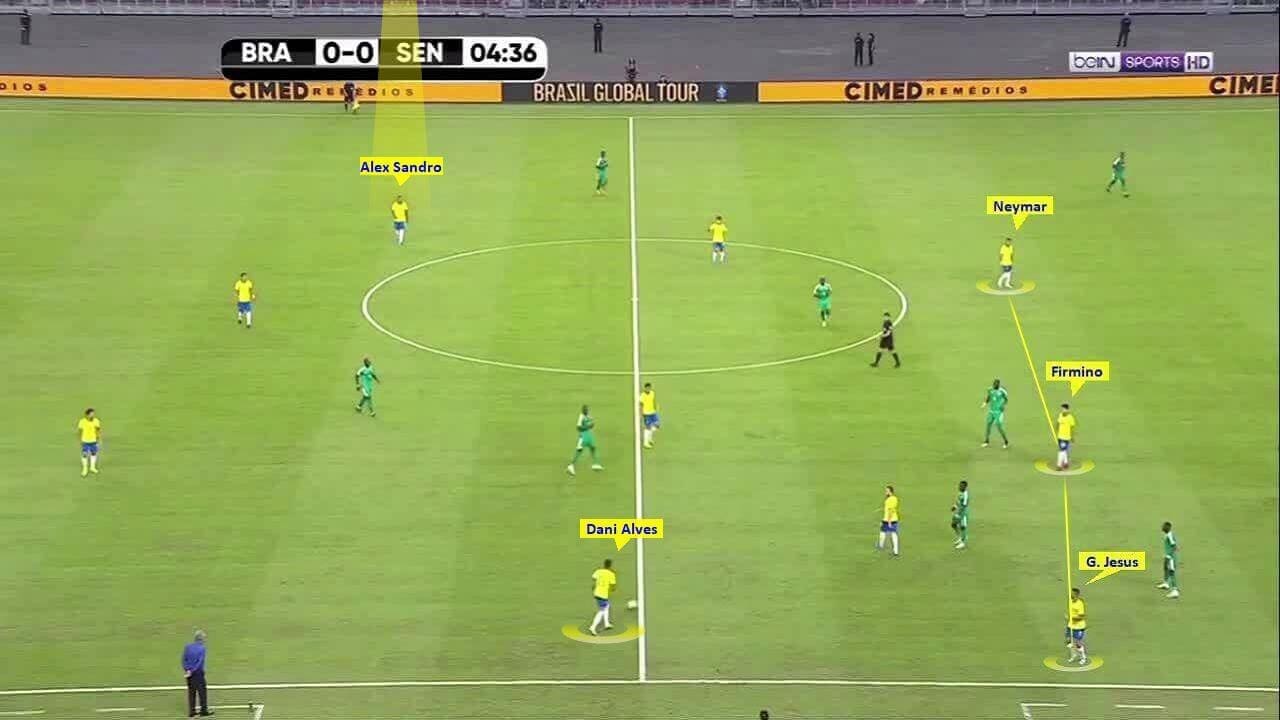
Brazil threatening down the right
The 2019 Copa América winners were dominant for the 25 minutes of the first half. Most of the dominance came thanks to an intelligent and quick interplay on the right-wing. Predominantly, it was Firmino, Dani Alves and Jesus who were integral for the build-up on that right side to happen.
In the image below, we can see a scene that happened many times during the game. Firmino dropped deeper to collect the ball from Dani Alves with Jesus situated wide on the right. The Liverpool striker received the ball from the team’s captain and played it back to the middle to Casemiro.
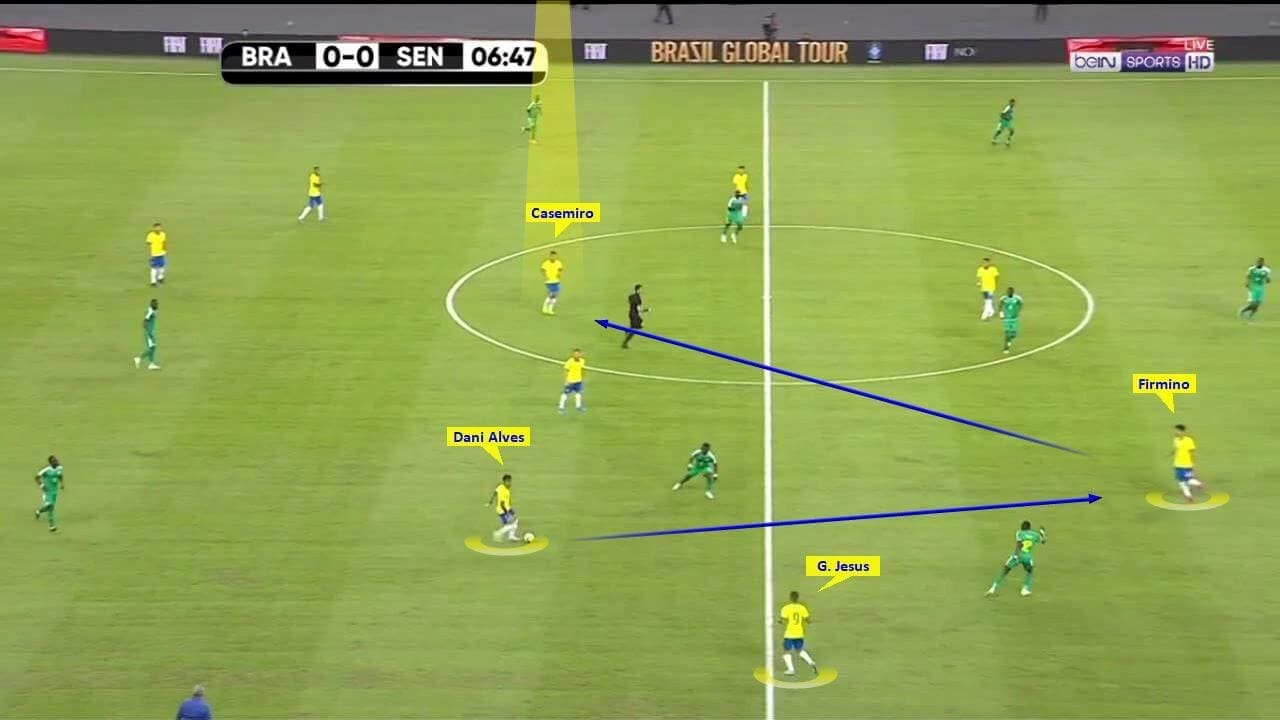
The whole action continued with Dani Alves bombing forward and receiving a pass from Casemiro. A key thing to point out here is how narrow all three Senegalese central midfielders were. When the ball was at the feet of Casemiro, the West Africans had an intention to clog the middle but it left them completely vulnerable on the right flank.
A left-back Coly was left on his own against Dani Alves and Jesus having to deal with a one against two numerical inferiority since Mané did not put the effort to track back.

The continuation of a trend can be seen in the pictures below. Here, Firmino once again dropped deeper to provide a passing option and link-up. Jesus stayed close to the opponent’s left-back while Dani Alves positioned himself higher up for a potential link-up. Senegal used a zonal marking system and altered between 4-5-1 and 4-1-4-1 when out of possession during the game.
The central figure for the alteration to take place was Kouyaté who followed Firmino from time to time to prevent the Brazilian from receiving the ball. In this occasion, Marquinhos saw it and played the ball back to Thiago Silva.
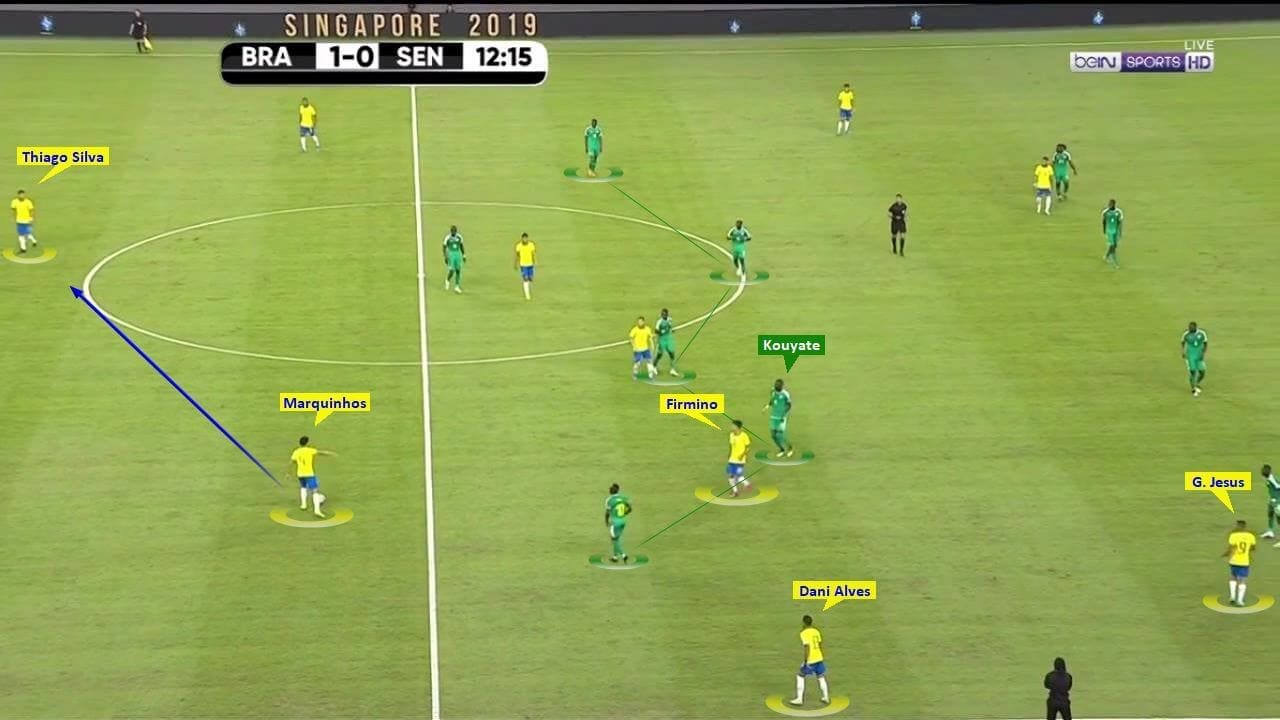
Once the ball was played back, the Africa Cup of Nations runners up decided to press very briefly which meant they lost their compact shape. Thiago Silva swiftly switched the ball to the right where three Brazilians were in space unpressured. Senegal were too slow to shift across.
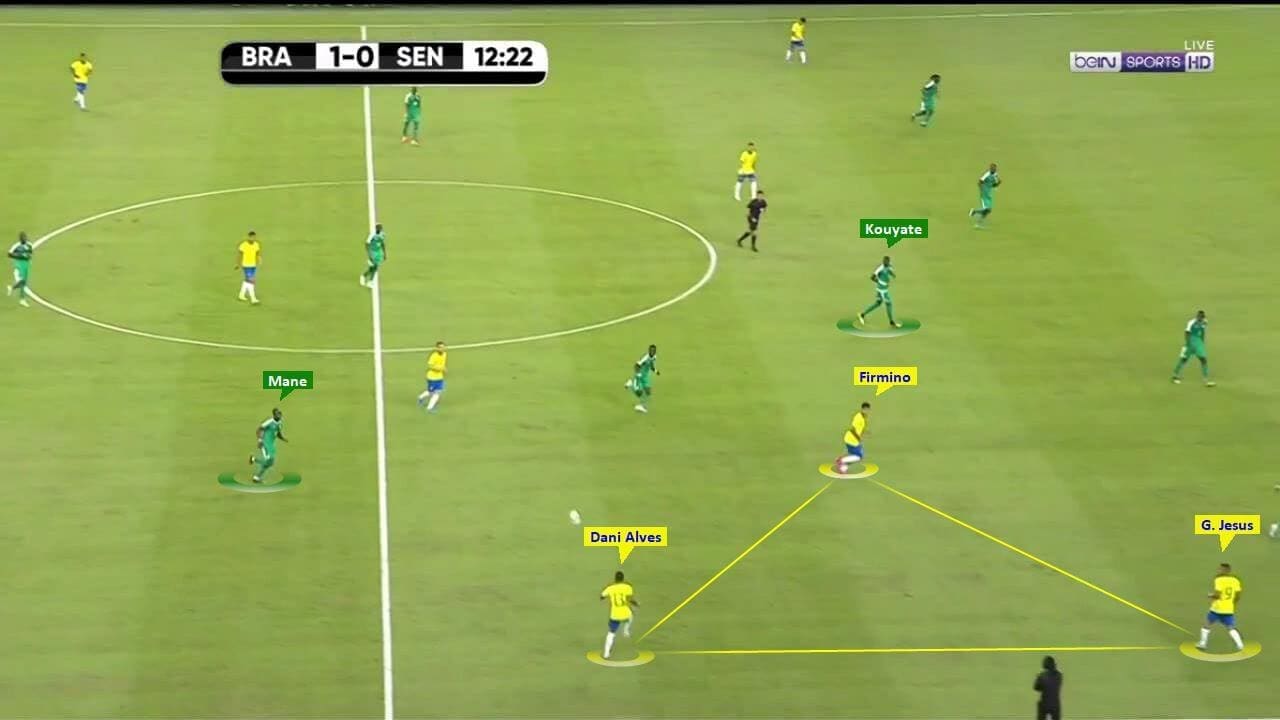
Tite’s team continued to be the most dangerous when attacking down the right flank even if the build-up started on the left side. They did so by overloading that side and swiftly switching the ball directly to Jesus who was practically hugging the right touchline when the Senegalese players were still more oriented towards the left side.
The image below illustrates the situation described above. We can see how Casemiro was positioned more in the left inside channel on the half-way line with Coutinho coming more centrally from the left. Dani Alves remained in his own half and since all five Senegal’s midfielders stayed compact and oriented slightly more to the left side, it opened up space on the right. Coutinho spotted it and using his great passing ability delivered a curving pass into the feet of Jesus.
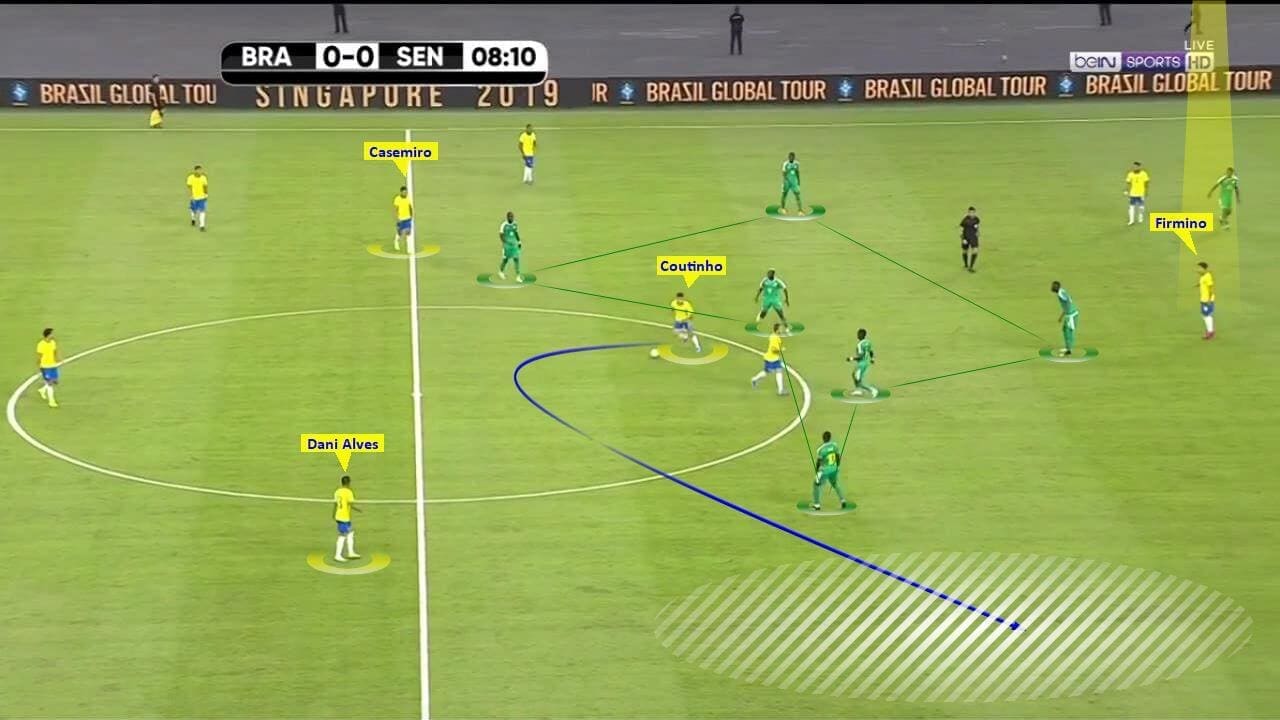
The Manchester City striker used his pace and dribbling skills to easily bypass Coly with Mané not being able to help out his teammate. This time Firmino did not drop into the midfield to collect the ball and thus produced a pure striker’s moment. He exploited the gap between the two centre-backs and met a fantastic through ball from Jesus. The Liverpool man completed the move with a superb lobbed finish.
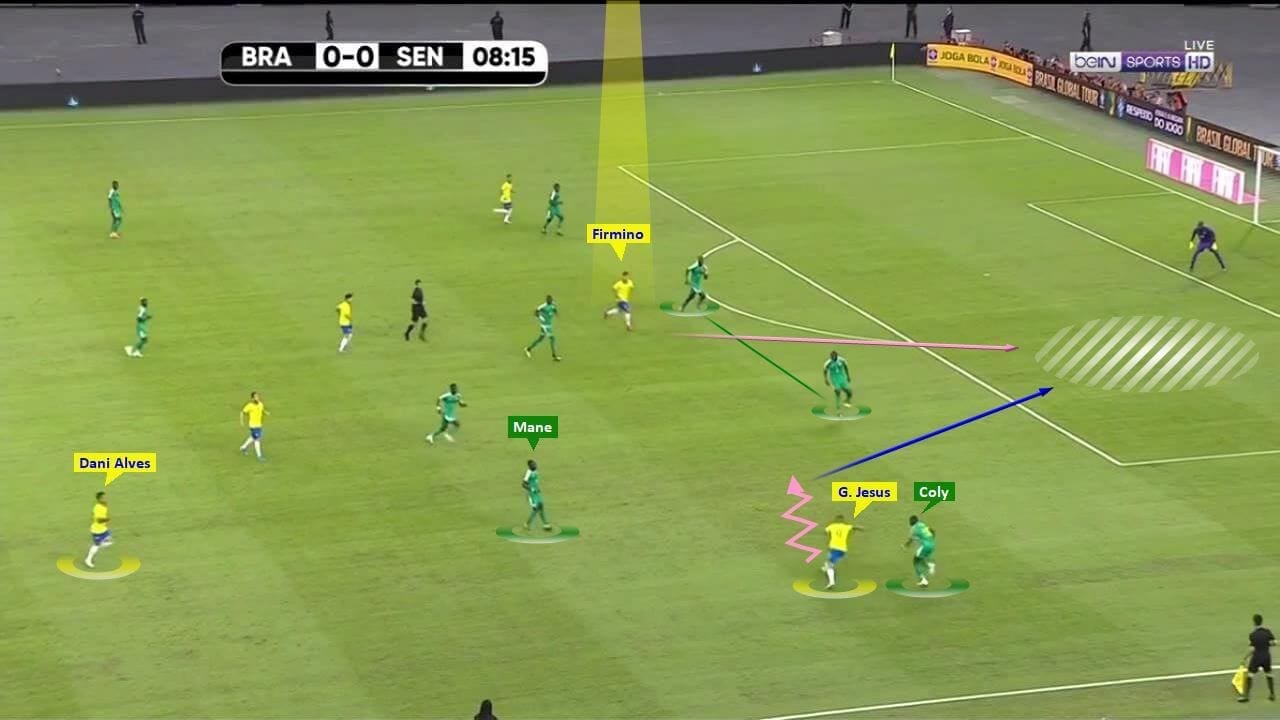
In the second half, Brazil continued attacking down the right-wing but noticeably it became less effective. Perhaps the main reason for that was the substitution made by Tite in the 59th minute. Firmino was replaced by Everton Soares which meant Neymar was moved to the central striker’s position while Everton occupied the left-wing.
Firmino’s ability to drop deeper and link-up meant that Senegal would congest the centre of the pitch even more that would free up space on the right-wing for Jesus and Dani Alves to combine. Neymar’s link-up play when playing down the middle is much worse than Firmino’s, therefore, Brazil were more predictable when attacking down the right flank in the second half.
Instead of Firmino who drops deeper to assist in link-up, Neymar was the one who stayed in the penalty box waiting for crosses. Such tactics did not prove to be very useful since Neymar had to try to win the aerial battle against two giants in Koulibaly and Sané.
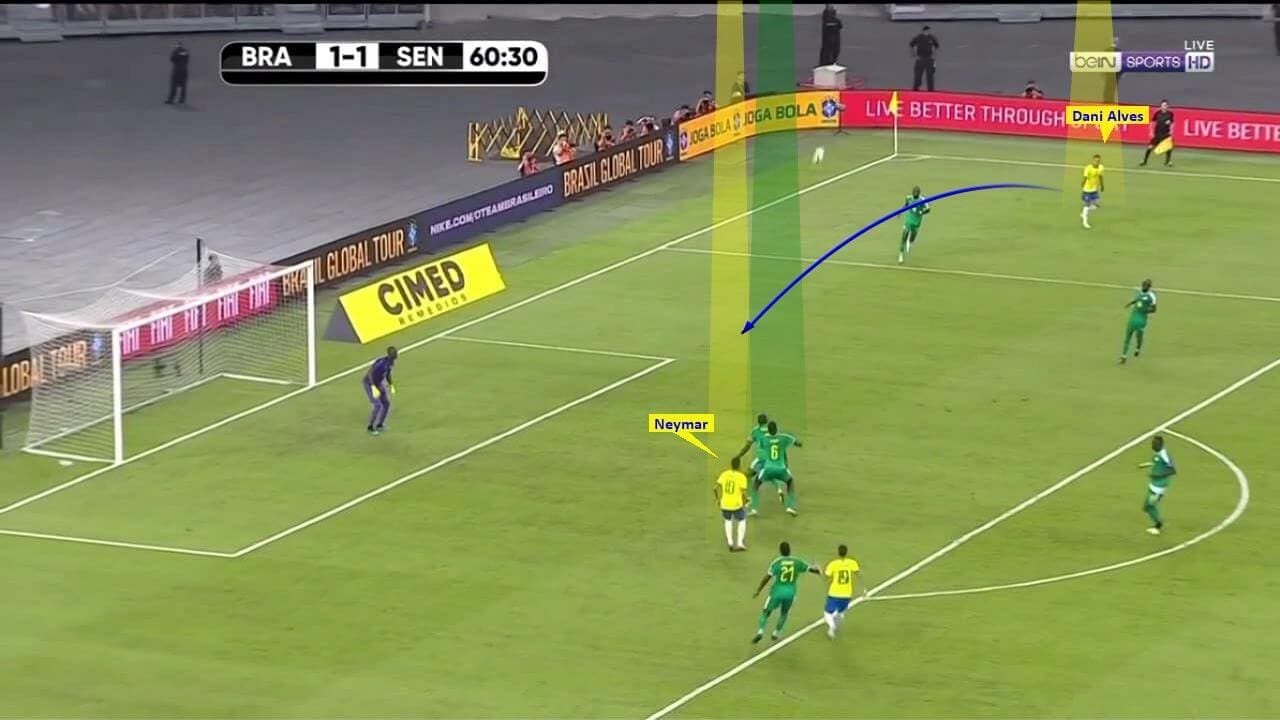
The passing map reaffirms the statements outlined previously about Brazil’s preference to attack down the right side. Alves and Jesus were on top in terms of the most connections within the team having linked-up an impressive 36 times. Dani Alves’ average position should also be taken into consideration showing what a threat going forward he still is even at the age of 36.
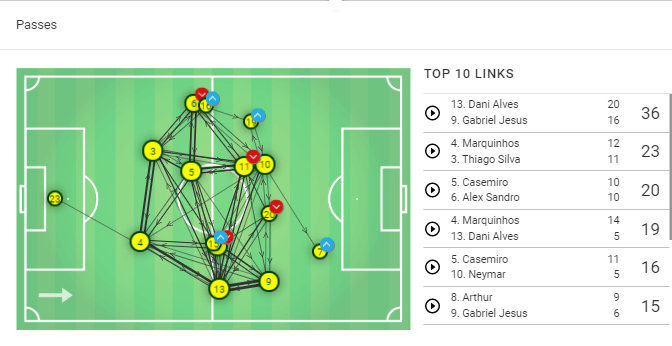
Senegal in possession
On the ball, Senegal’s formation had some similarities when compared to Brazil. A holding midfielder Kouyaté was the one who usually dropped between the two centre-halves to aid the build-up process since the South Americans had two players in their first defensive line. The remaining two central midfielders took up more advanced positions, however, neither Gueye nor Diatta are renown for their attacking qualities. Both full-backs seemed to rarely join the attack having Neymar and Jesus on either flank to worry about.
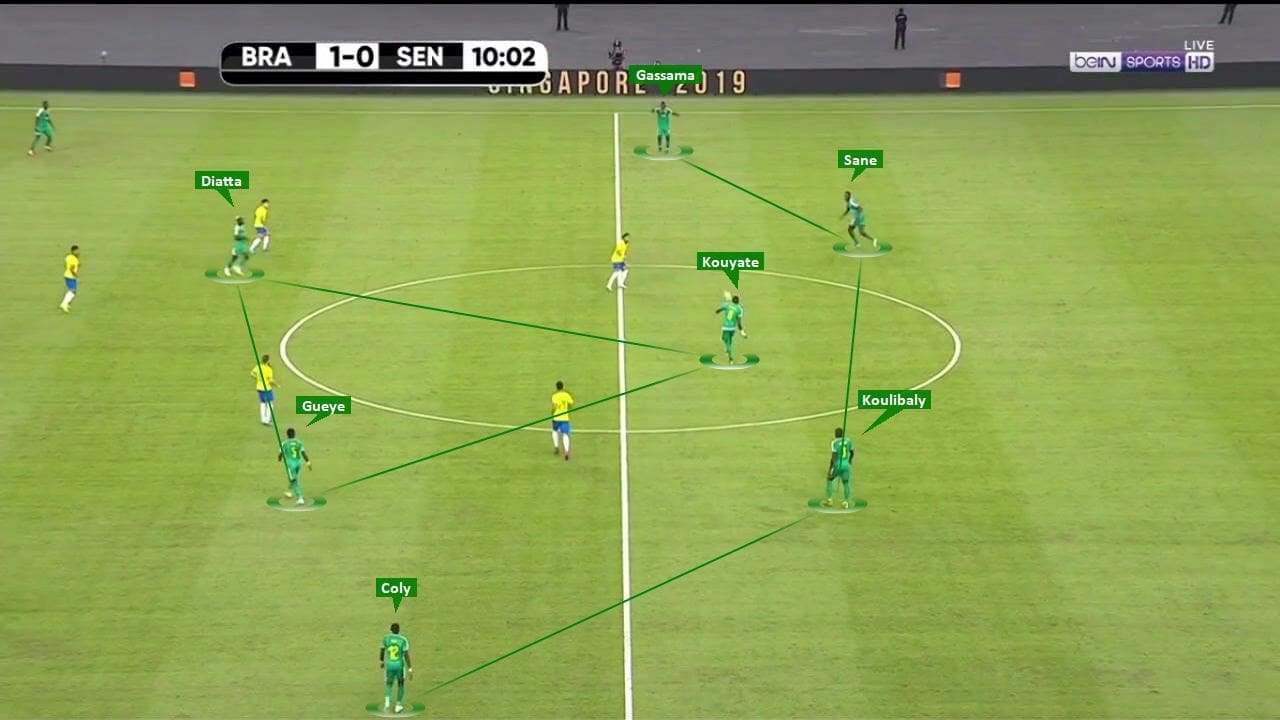
Upfront, it was a trio of Mané, Sarr and Diédhiou. Noteworthy is the distance between the attacking trio and the midfield. It indicates that when Brazil pressed higher up, Senegal intended to play long balls in behind, predominantly it being the left-wing where Mané was positioned.
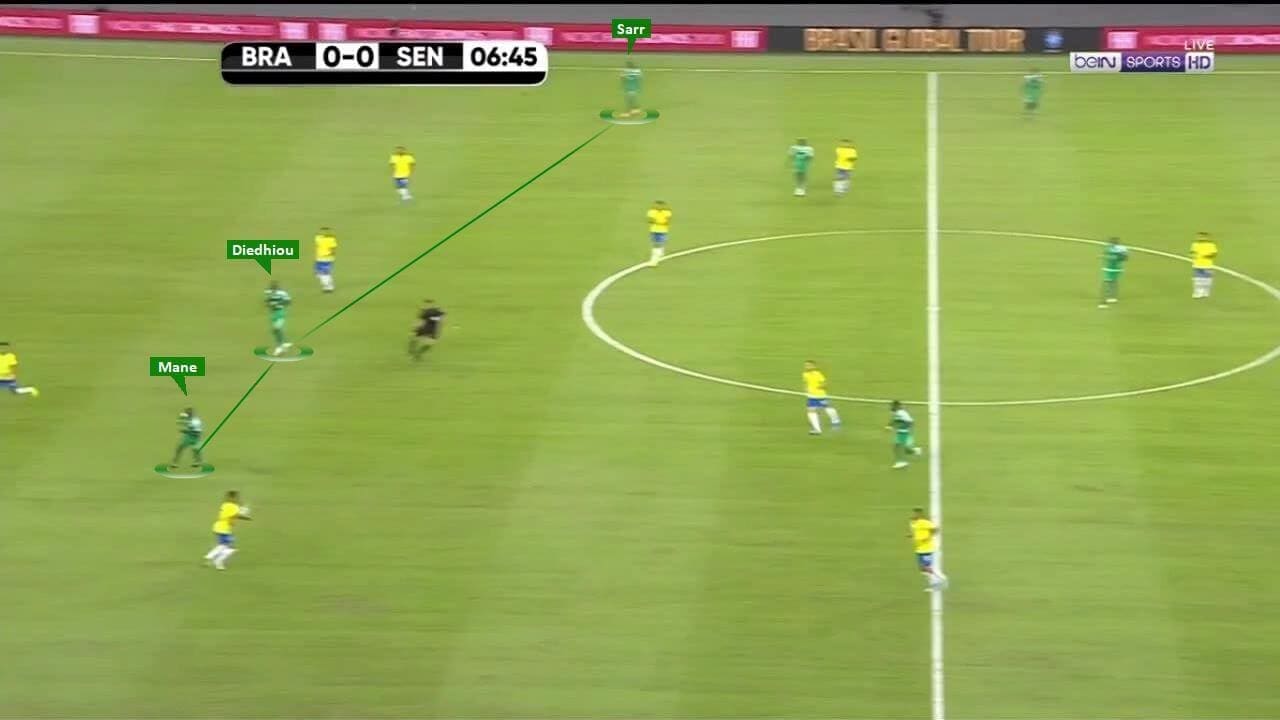
Below we can see an illustration from the second half which shows exactly what was mentioned above. Brazil pressed the West Africans high up the pitch, therefore, Senegalese defenders opted for long-ball tactics. For it to work, the attacking trio stayed higher up in the opposition’s half.
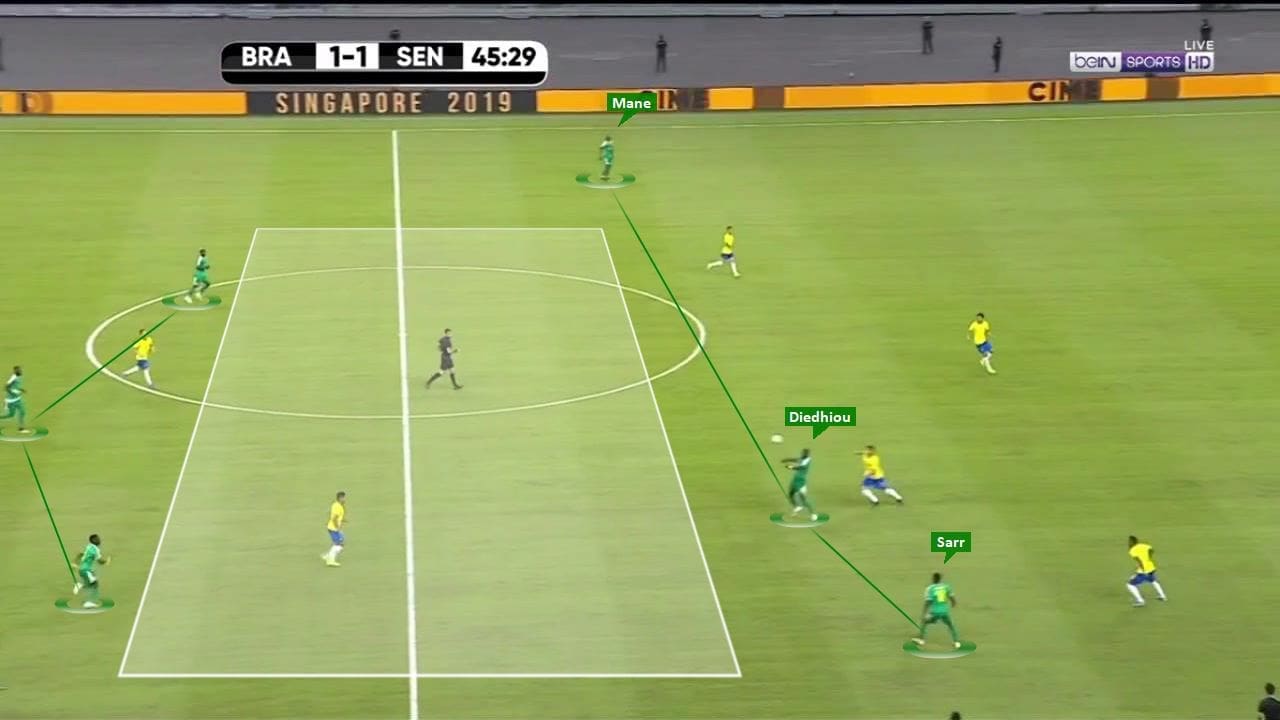
The passing networks’ graph below provides a quick overview of Senegal’s style of play. We can see that both full-backs (no.12 and no.21) were pretty cautious when it came to joining the attack. The most cautious was the left-back Coly who was far more concerned with the defensive duties on how to stop Dani Alves and Jesus duo than with the offensive ones.
Another thing that catches the eye is how narrow the midfield trio played in this game. It shows that Senegal tried to avoid being bypassed through the midfield. Finally, Mané did not appear in any of the top six connections within the team indicating the creation of space for him to run in behind or play one on one as his isolated position on the left indicates.
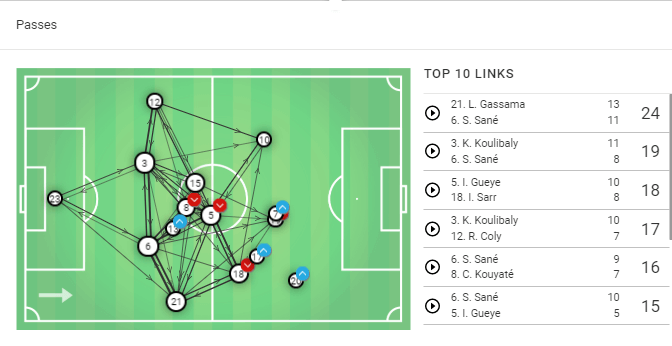
Sadio Mané
Liverpool’s left-forward is undoubtedly the key figure in this Senegalese team. Thus, no surprise that Senegal’s best chances of the game came down the left flank. Possessing fantastic pace and timing of his runs, Mané is a real threat when playing in behind. This is what precisely happened on more than a few occasions in this game.
In the first example below, we can see Brazil defending higher up the pitch. Consequently, every time the Seleção stepped out and were more aggressive, Senegal went long. In this specific case, it was Koulibaly who sent a long ball over the top for Mane to chase. It did not end up in anything particularly dangerous but the trend was visible from the first minutes of the game.
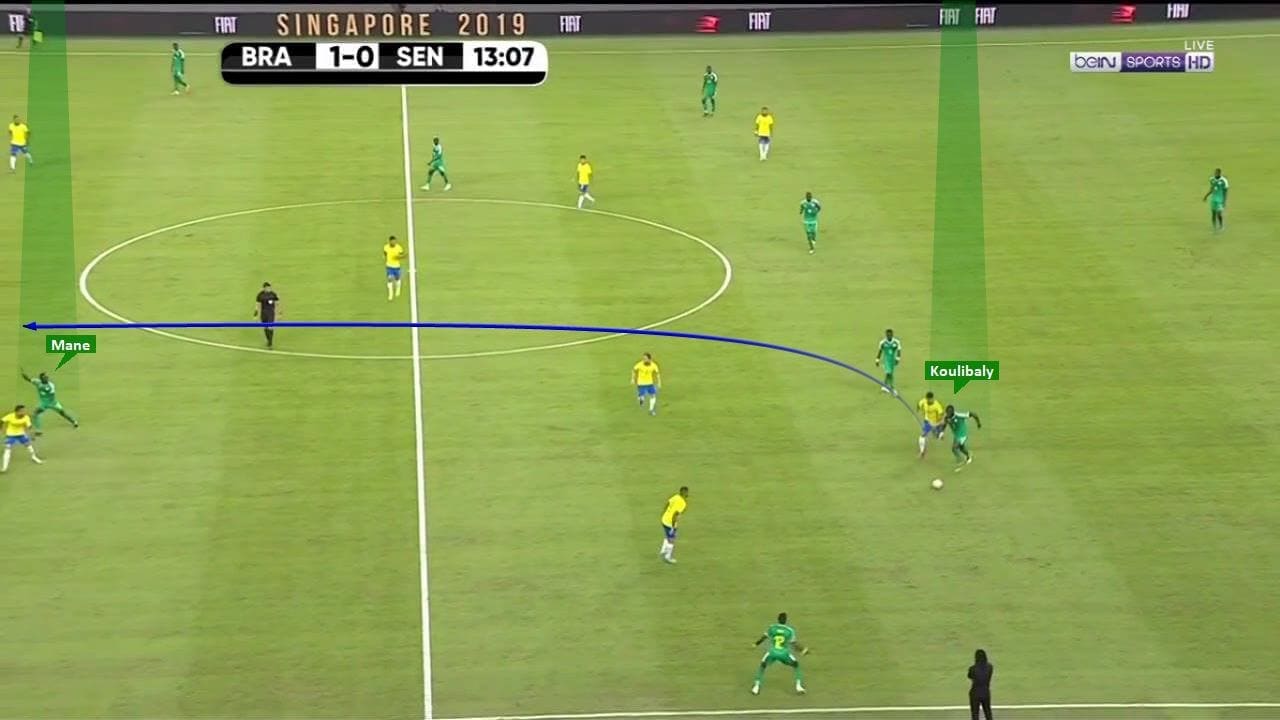
Another tactic that the Senegalese head coach used to get the most out of Mané’s individual ability was to overload one side of the pitch. Such a scene is captured below where four Senegal players are situated on the right side. Noteworthy is the position of two central midfielders Diatta and Gueye who played a pivotal role in freeing up Mané on the opposite side in this case.
Since both Gueye and Diatta moved to the inside channel, this manoeuvre invited Brazil’s central midfielders over that side as well. As a result, the opposite side was left completely open and Liverpool’s left-forward was more than keen to exploit it.
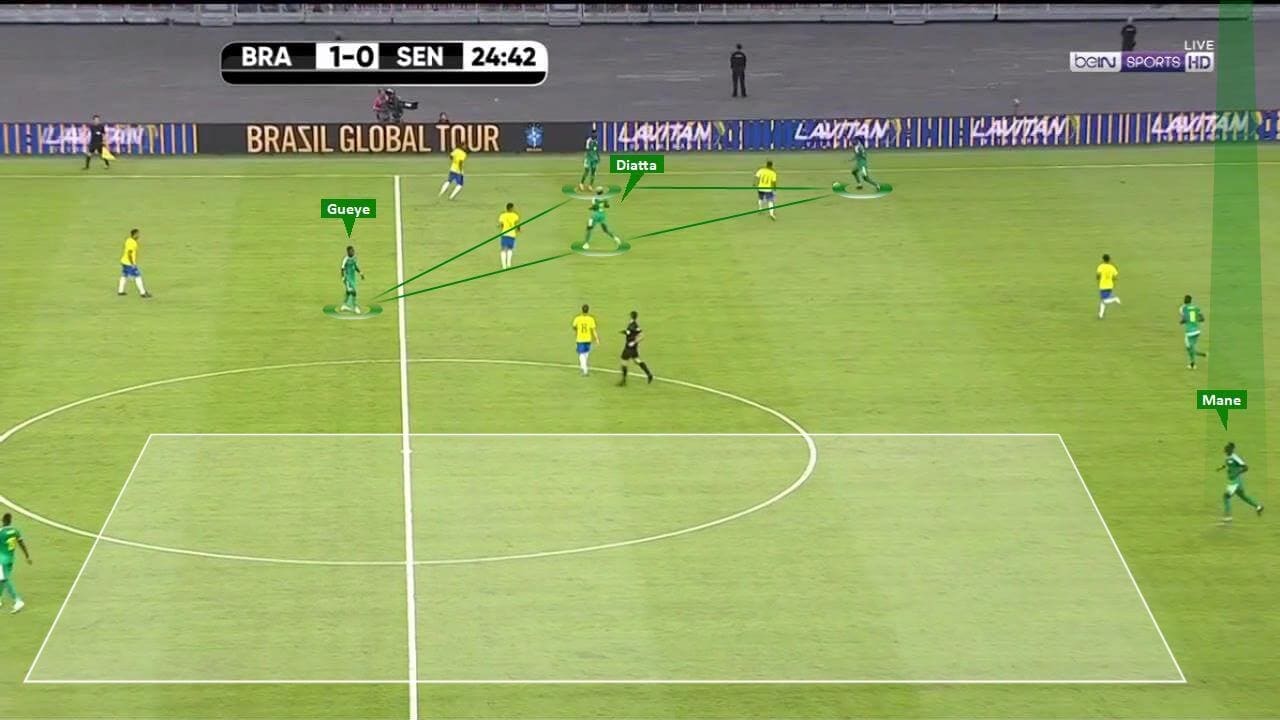
The attacking move continued on the right side with Mané still in plenty of space when approaching the penalty area. Here, the work done by Diédhiou has to be applauded as well.
The Bristol City striker moved in a direction towards Sarr, thus, dragging away Marquinhos. It created even more space for Mané who was able to take a shot that was parried away by Ederson.
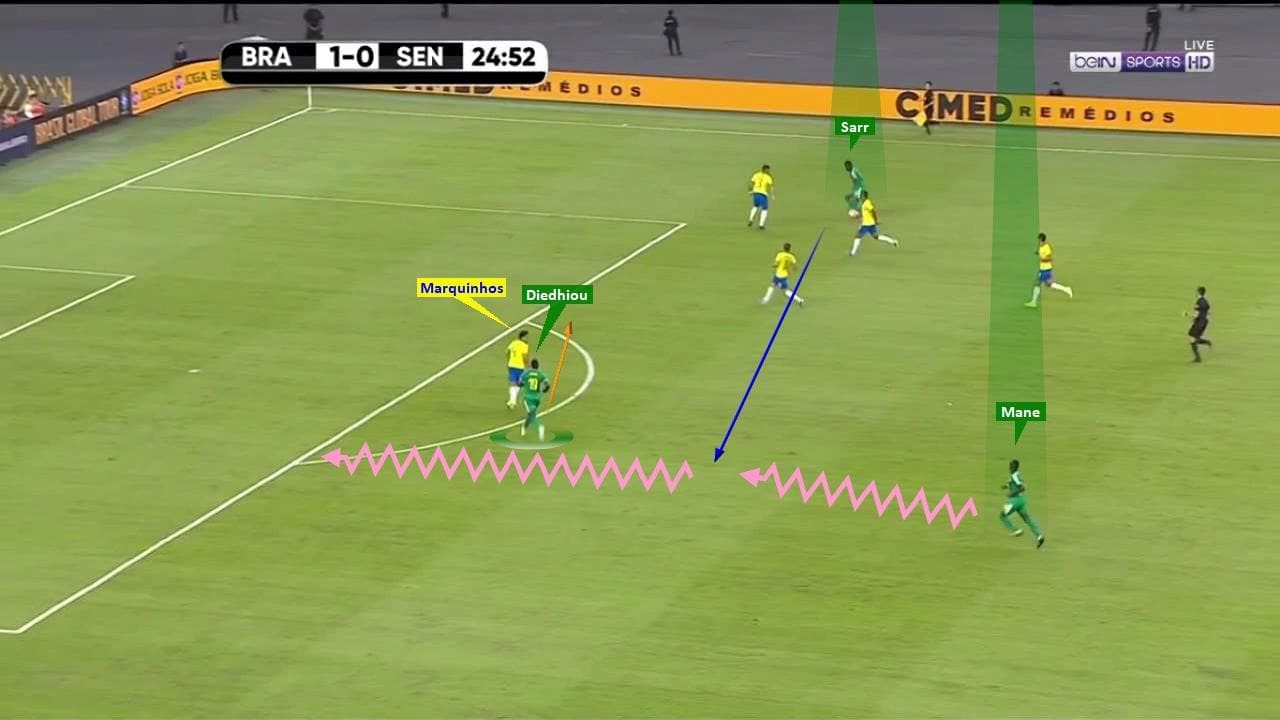
The highlight of the game came in the 44th minute when the Liverpool star dribbled past a trio of Casemiro, Dani Alves and Marquinhos to win the penalty for Senegal. This one episode proves yet again how one player can make a massive difference. Moreover, it justifies the passing map displayed above where Mané was the one allowed the most freedom.
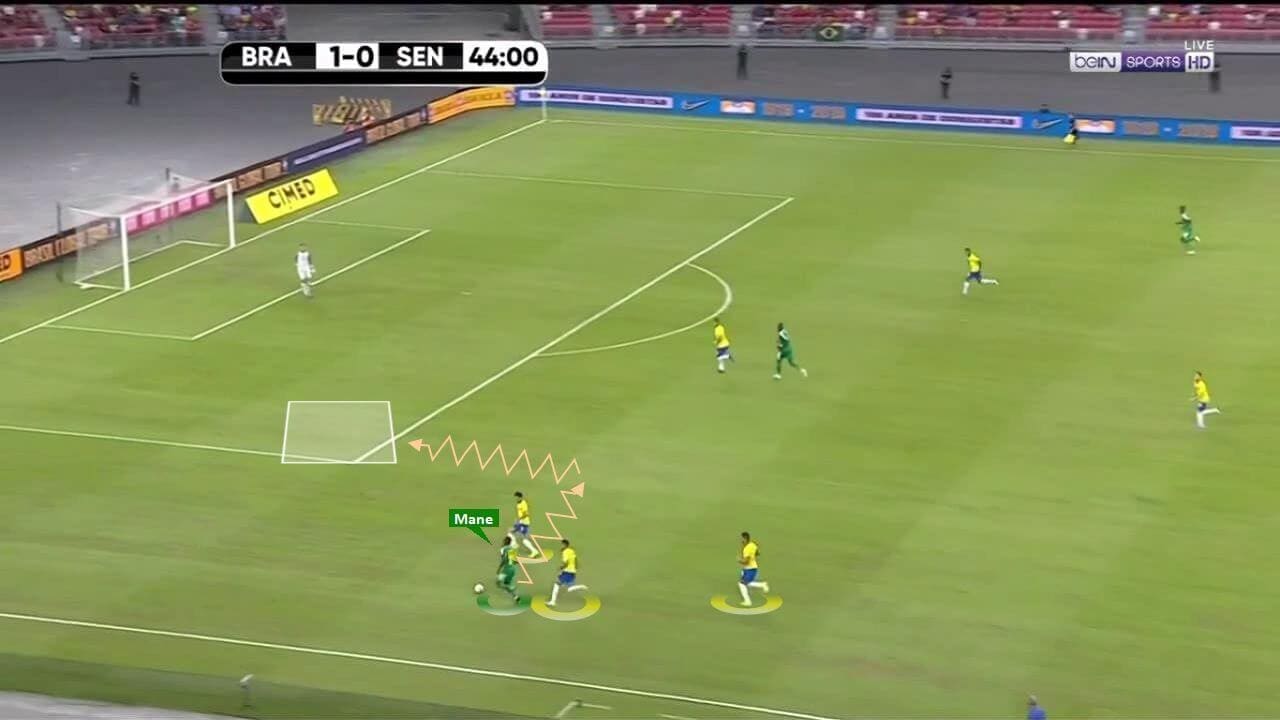
Conclusion
Even though it was just a friendly, it proved to be an entertaining encounter. Both teams played their strongest starting XIs which was quite unexpected due to the location and exhausting weather conditions. All in all, as this analysis explained, it was a fairly equal game with both teams even having a chance to win it in the last five minutes.
Brazil will play another African team when they face Nigeria on Sunday. In contrast, Senegal will return to action in November when they will start the qualifying campaign for the 2021 Africa Cup of Nations tournament.
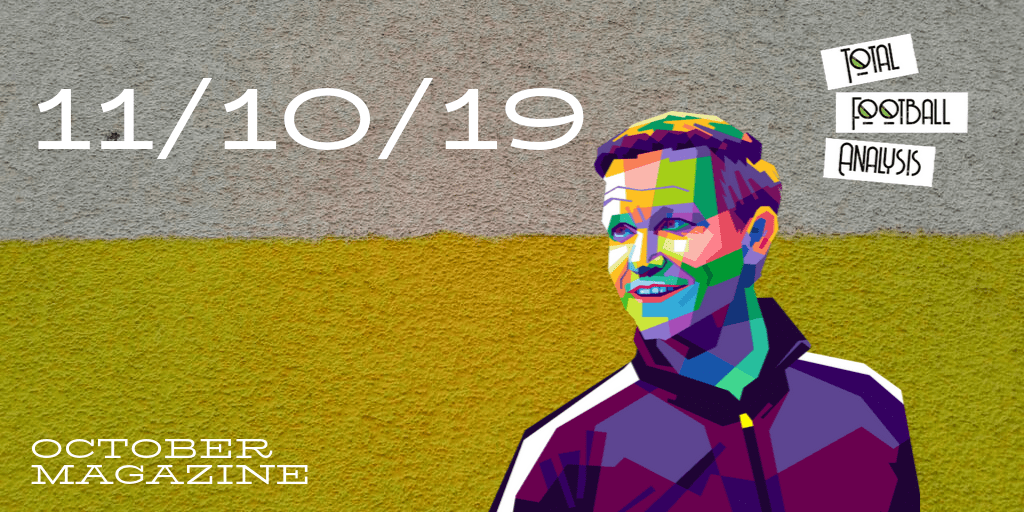
If you love tactical analysis, then you’ll love the digital magazines from totalfootballanalysis.com – a guaranteed 100+ pages of pure tactical analysis covering topics from the Premier League, Serie A, La Liga, Bundesliga and many, many more. Buy your copy of the October issue for just ₤4.99 here

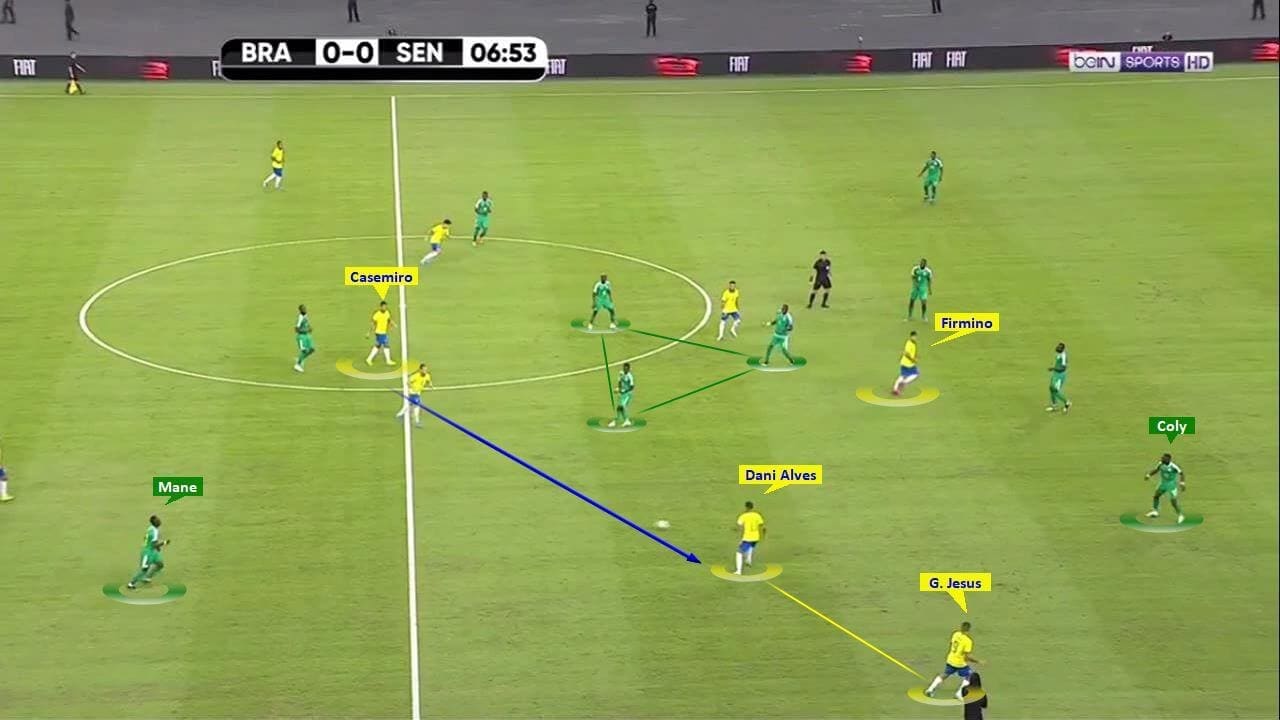



Comments